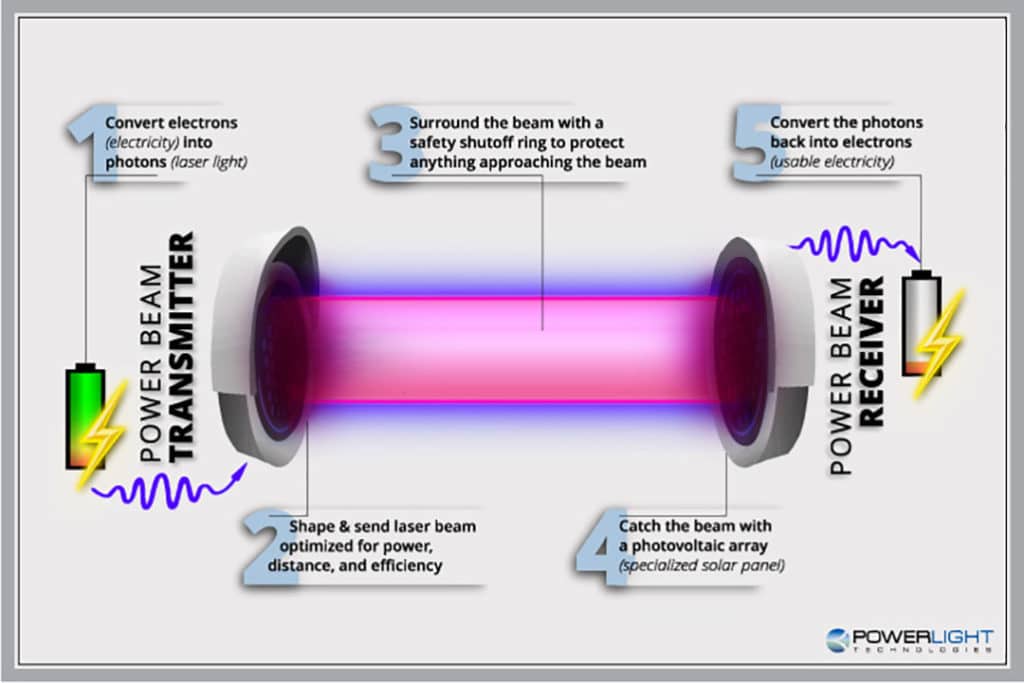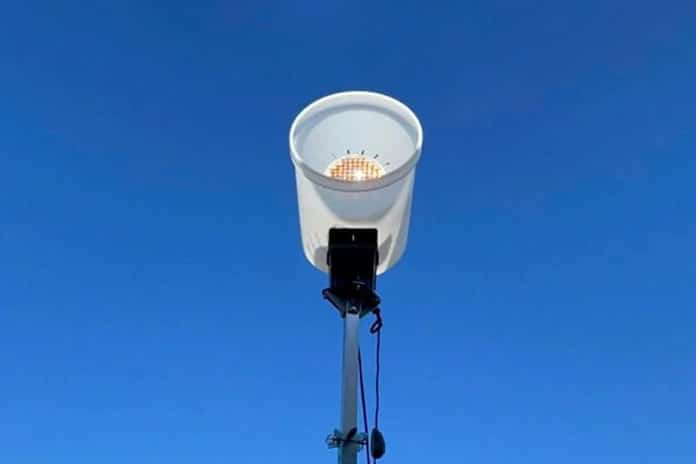Today, commercial wireless charging systems can power gadgets such as smartphones, headphones, or smartwatches located on special panels. In laboratory conditions, options are already being tested that allows charging electronics within the premises, but so far, there are no commercial solutions that are ready to charge devices over long distances, especially outdoors.
In the proof-of-concept (PoC), Ericsson and PowerLight Technologies have demonstrated a technique called optical beaming – a laser-based technology that converts electricity into high-intensity light which is then captured and transformed to electricity at the radio base station.
The demonstration was a part of the two companies to explore and develop innovative 5G solutions aimed at enhancing the speed and flexibility of network deployment in diverse environments.
Wireless power was safely distributed to an Ericsson Streetmacro 6701 – a 5G millimeter wave (mmWave) radio base station. During the demonstration, no cables were used to supply signals or electricity to the site from the street power grid network, and no on-site power generation was involved. The base station site was completely ‘powerless’ until wirelessly powered over the air through a laser beam.
The system consists of a transmitter and a receiver, which in theory can be located at a distance of hundreds or even thousands of meters from each other. The main condition is that the receiver and transmitter must be in the line of sight to each other.

During the experiment, a total of 480 watts was transmitted over a distance of 300 meters, but the development team claims that the technology can already transmit hundreds of watts over hundreds of meters through the air. The precise details still remain vague, but Ericsson indicates that the technology tested could pave the way for subsequent generations of the solution to transmit kilowatts of energy over long distances.
It might seem dangerous to have a beam of high-intensity light blasting through open air, but there are safety measures in place. The laser beam has a virtual shield or safety ring that automatically and temporarily shuts down power transmission before any living, or inanimate object crosses its path. When the safety ring is activated, the site’s backup battery takes over until the beam is cleared. Vital base stations use batteries for local energy provisioning to ensure highly reliable mobile services.
Apart from rapid street radio rollouts, wireless power could support use cases such as provisional deployments in case of emergency or time-specific densification demands, such as during music festivals and sports events. It could also support power-cable-free machines such as automated guided vehicles and drones and devices like IoT sensors and lamps, and even potentially in future space missions.
Communications service providers will also have the flexibility to position a base station without compromising communication needs in relation to where a power wire is located.
